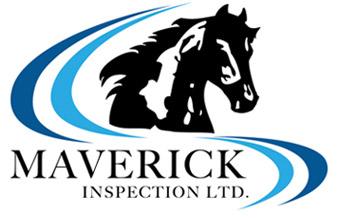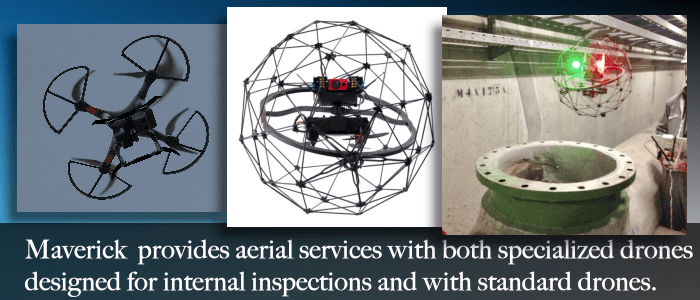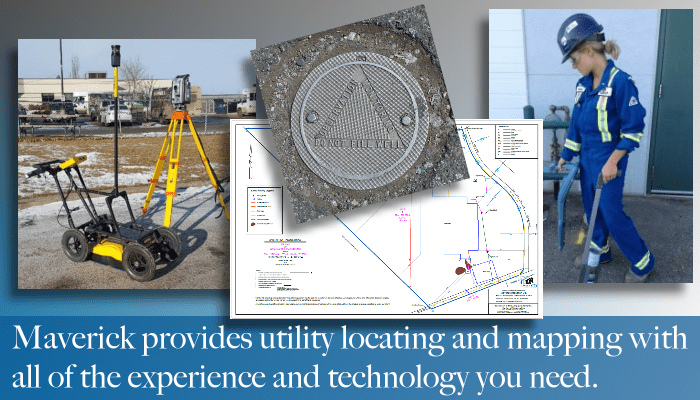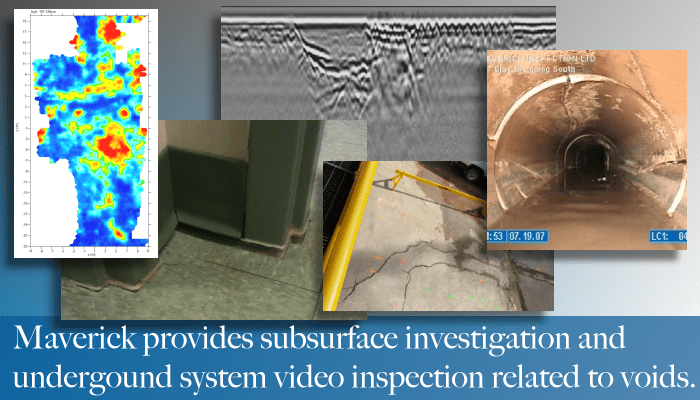Maverick’s Primary Subsurface Technology
Ground Penetrating Radar (GPR) is the flagship technology in Maverick’s Subsurface Division. GPR is the science of penetrating the surface with radio waves in order to gather information about underground features and facilities.

Geomatics Mapping & Modeling
Identify your subsurface utilities by creating a map or model

Utility Locating

Push Reels & Sondes
Use a push reel and sonde to identify non-conductive pipes

Drone & RPAS Imagery
Enhance your project with real time imagery or maps
WHAT SETS MAVERICK APART FROM ALL OTHERS?
From Edmonton Alberta, Maverick has been performing GPR services in Western Canada since 2001, on all types of sites for all industries. We have a wide range of systems, not limited to one manufacturer, frequency, make, model, generation, or deployment platform. Every GPR system has strengths and weaknesses, and experience and training is required to select the right option, or even combine multiple frequencies or deploy complementary technologies.
We have the experience and training required for diligent equipment selection, data gathering, software analysis, reporting, and communication of results. We maintain the qualifications and requirements to access the most secure and
demanding sites and facilities. With Maverick you are not paying for an untested, eager entrepreneur with a new hardhat and a supposedly user-friendly system fresh out of the box. You are purchasing access to a team of experts dedicated to providing results.
Maverick’s commitment to safety, quality, and reliability extends beyond training, experience, and data gathering procedures. Our team includes an Electronic Technologist with a decade of experience testing, calibrating, maintaining, and repairing remote sensing geoscientific equipment on a component level.
About Ground Penetrating Radar
Maverick uses a range of application-specific analysis software systems and methods. We create georeferenced maps and models. We understand our clients’ specific data requirements, and we provide reliable results that engineering, geophysical, construction, inspection and other professionals trust.
In addition to Ground-penetrating Radar, Maverick deploys subsurface technology such as Magnetometry, EM Profiling, Seismic, Conductivity, Resistivity, and Acoustics.

Call for Information:
780-467-1606
TYPICAL GROUND PENETRATING RADAR APPLICATIONS
FAQ: IS GPR LIKE X-RAY RADIOGRAPHY OR ULTRASOUND?
- Concrete scans to locate and map out conduits, post-tension cables, rebar, and other features prior to cutting or coring
- Mapping out structural steel, concrete thickness, and other structural elements for engineering studies
- Underslab void and saturation mapping
- Utility locates
- Archeology & forensics support
- Cemetery and First Nations burial site mapping
- Mapping out subsurface features and conditions prior to critical crane lifts
- Contamination plume mapping when other technologies cannot be deployed effectively
- Locating of underground storage tanks
- Gathering data for gravel and placer mining exploration
- Sub-bottom profiling of lakes, ponds, peat, etc.
- Ice road thickness studies
- Asphalt thickness studies
GPR is different from both of these imaging methods. X-ray is actually Radiography, which uses a radioactive source, and requires site evacuations and other risk factors. Ultrasound uses mechanical sound waves to image conductive materials in high detail. GPR uses radio waves, similar to a cordless phone to locate objects within various surfaces.
If there is a situation where Ground Penetrating Radar does not appear to be as effective as desired for any reason, and x-ray is deemed more applicable for the application, Maverick Inspection will inform you. Maverick has a good working relationship with x-ray providers, and understands the benefits and limitations of both technologies. There have even been job-sites in the past where neither technology alone could provide adequate information, and they have been used together to tackle complex inspection scenarios.
F.A.Q.
What is Ground Penetrating Radar (GPR)?
Ground Penetrating Radar is a geophysical method that uses ultra-wide band radio waves to image the subsurface. It is a non-intrusive technology that is able to image through concrete, soils, minor vegetation and other conductive mediums. GPR utilizes different high and low frequencies dependent on the composition of soils and scope of work being completed.
Where is GPR best used?
Use of GPR and frequency of antenna are dependent on the scope of work. Higher frequency antennas are used for concrete applications such as identifying embedded features, concrete slab profiling, subsurface void detection and other various aspects of concrete characterization. Lower frequency antennas are typically used across asphalt or soil mediums for detection of non-locatable facilities comprised of concrete, plastics, fiber or other non-conductive materials. Other applications of longwave GPR can be dependent on work scope such as void detection, changes in composition of materials, depth to bed rock, historical areas of excavation or trenching, clandestine burials, old building foundations, subsurface saturation, etc.
What are some limitations of GPR?
Limitations of GPR include standing water, inability to image through metallic objects, metal fiber reinforced floors, variations in soil composition (i.e. clay, ferrous till), cannot identify specific materials such as gold or precious gems.
Is GPR similar to X-Ray?
GPR greatly differs from X-Ray as GPR uses UWB radio waves as opposed to a radioactive source of ionizing radiation. No specialized TDG documentation or site requirements are needed while using GPR.
Related Services
Drone, RPAS and Unmanned Aerial Vehicles
Use drones to navigate into spaces that are inhospitable to manned entry.
Utility Locating
Between Industrial, commercial and residential utility located Maverick Inspection Ltd. has the experience to get the job done right.
Remote Video Inspection
Use remote video inspection to enhance your sub surface inspection.



